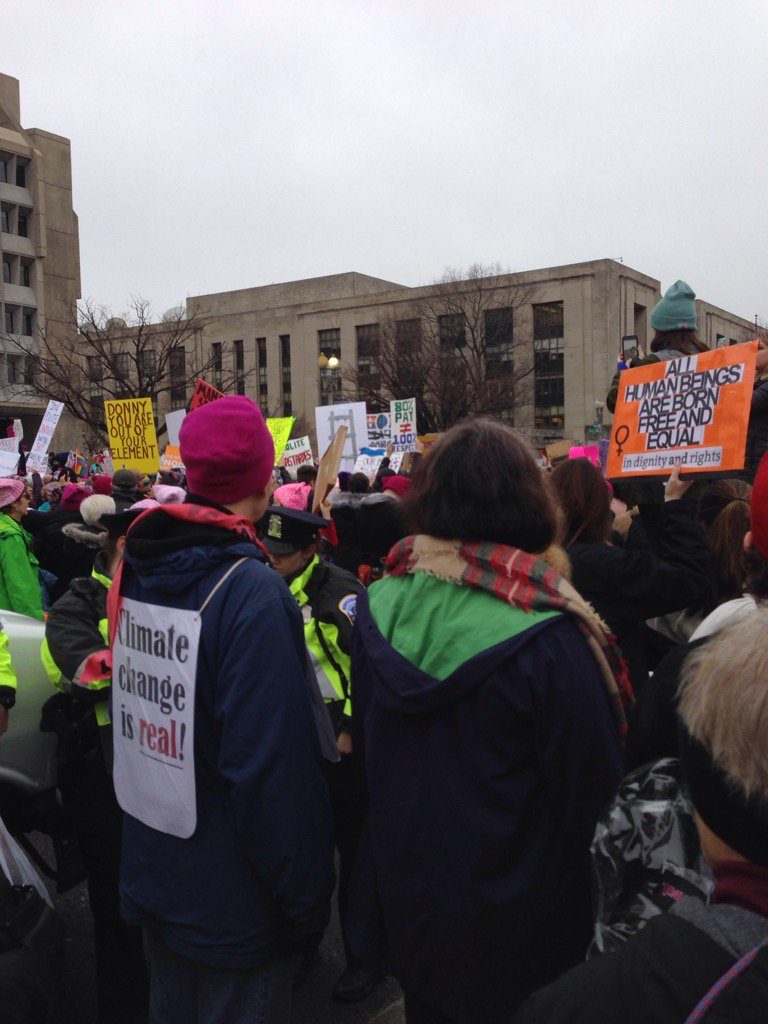Aaron D. Knochel | Assistant Professor of Art Education
Recent reports indicate that Trump administration officials have circulated plans to defund the National Endowment of the Arts (NEA), putting this agency on the chopping block – again.
Conservatives have sought to eliminate the NEA since the Reagan administration. In the past, arguments were limited to the content of specific state-sponsored works that were deemed offensive or immoral – an offshoot of the culture wars.
Now the cuts are largely driven by an ideology to shrink the federal government and decentralize power. The Heritage Foundation, a conservative think tank, argues that government should not use its “coercive power of taxation” to fund arts and humanities programs that are neither “necessary nor prudent.” The federal government, in other words, has no business supporting culture. Period.
But there are two major flaws in conservatives’ latest attack on the NEA: The aim to decentralize the government could end up dealing local communities a major blow, and it ignores the economic contribution of this tiny line item expense.
The relationship between government and the arts
Historically, the relationship between the state and culture is as fundamental as the idea of the state itself. The West, in particular, has witnessed an evolution from royal and religious patronage of the arts to a diverse range of arts funding that includes sales, private donors, foundations, corporations, endowments and the government.
Prior to the formation of the NEA in 1965, the federal government strategically funded cultural projects of national interest. For example, the Commerce Department subsidized the film industry in the 1920s and helped Walt Disney skirt bankruptcy during World War II. The same could be said for the broad range of New Deal economic relief programs, like the Public Works of Art Project and the Works Progress Administration, which employed artists and cultural workers. The CIA even joined in, funding Abstract Expressionist artists as a cultural counterweight to Soviet Realism during the Cold War.
The NEA came about during the Cold War. In 1963, President John F. Kennedy asserted the political and ideological importance of artists as critical thinkers, provocateurs and powerful contributors to the strength of a democratic society. His attitude was part of a broader bipartisan movement to form a national entity to promote American arts and culture at home and abroad. By 1965, President Johnson took up Kennedy’s legacy, signing the National Arts and Cultural Development Act of 1964 – which established the National Council on the Arts – and the National Foundation on the Arts and Humanities Act of 1965, which established the NEA.
Since its inception, the NEA has weathered criticism from the left and right. The right generally argues state funding for culture shouldn’t be the government’s business, while some on the left have expressed concern about how the funding might come with constraints on creative freedoms. Despite complaints from both sides, the United States has never had a fully articulated, coherent national policy on culture, unless – as historian Michael Kammen suggests – deciding not to have one is, in fact, policy.
Flare-ups in the culture wars
Targeting of the NEA has had more to do with the kind of art the government funded than any discernible impact to the budget. The amount in question – roughly US$148 million – is a drop in the morass of a $3.9 trillion federal budget.
Instead, the arts were a focus of the culture wars that erupted in the 1980s, which often invoked legislative grandstanding for elimination of the NEA. Hot-button NEA-funded pieces included Andre Serrano’s “Immersion (Piss Christ)” (1987), Robert Mapplethorpe’s photo exhibit “The Perfect Moment” (1989) and the case of the “NEA Four,” which involved the rejection of NEA grant applicants by performance artists Karen Finley, Tim Miller, John Fleck and Holly Hughes.
In each case, conservative legislators isolated an artist’s work – connected to NEA funding – that was objectionable due to its sexual or controversial content, such as Serrano’s use of Christian iconography. These artists’ works, then, were used to stoke a public debate about normative values. Artists were the targets, but often museum staff and curators bore the brunt of these assaults. The NEA four were significant because the artists had grants unlawfully rejected based upon standards of decency that were eventually deemed unconstitutional by the Supreme Court in 1998.
As recently as 2011, former Congressmen John Boehner and Eric Cantor targeted the inclusion of David Wojnarowicz’s “A Fire in My Belly, A Work in Progress” (1986-87) in a Smithsonian exhibition to renew calls to eliminate the NEA.
In all these cases, the NEA had funded artists who either brought attention to the AIDS crisis (Wojnarowicz), invoked religious freedoms (Serrano) or explored feminist and LGBTQ issues (Mapplethorpe and the four performance artists). Controversial artists push the boundaries of what art does, not just what art is; in these cases, the artists were able to powerfully communicate social and political issues that elicited the particular ire of conservatives.
A local impact
But today, it’s not about the art itself. It’s about limiting the scope and size of the federal government. And that ideological push presents real threats to our economy and our communities.
Organizations like the Heritage Foundation fail to take into account that eliminating the NEA actually causes the collapse of a vast network of regionally controlled, state-level arts agencies and local councils. In other words, they won’t simply be defunding a centralized bureaucracy that dictates elite culture from the sequestered halls of Washington, D.C. The NEA is required by law to distribute 40 percent of its budget to arts agencies in all 50 states and six U.S. jurisdictions.
Many communities – such as Princeton, New Jersey, which could lose funding to local cultural institutions like the McCarter Theatre – are anxious about how threats to the NEA will affect their community.
Therein lies the misguided logic of the argument for defunding: It targets the NEA but in effect threatens funding for programs like the Creede Repertory Theatre – which serves rural and underserved communities in states like Colorado, New Mexico, Utah, Oklahoma and Arizona – and Appalshop, a community radio station and media center that creates public art installations and multimedia tours in Jenkins, Kentucky to celebrate Appalachian cultural identity.
While the present administration and the conservative movement claim they’re simply trying to save taxpayer dollars, they also ignore the significant economic impacts of the arts. The Bureau of Economic Analysis reported that the arts and culture industry generated $704.8 billion of economic activity in 2013 and employed nearly five million people. For every dollar of NEA funding, there are seven dollars of funding from other private and public funds. Elimination of the agency endangers this economic vitality.
Ultimately, the Trump administration needs to decide whether artistic and cultural work is important to a thriving economy and democracy.![]()
Aaron D. Knochel is an assistant professor of art education at Pennsylvania State University. This article was originally published on The Conversation. Read the original article.







